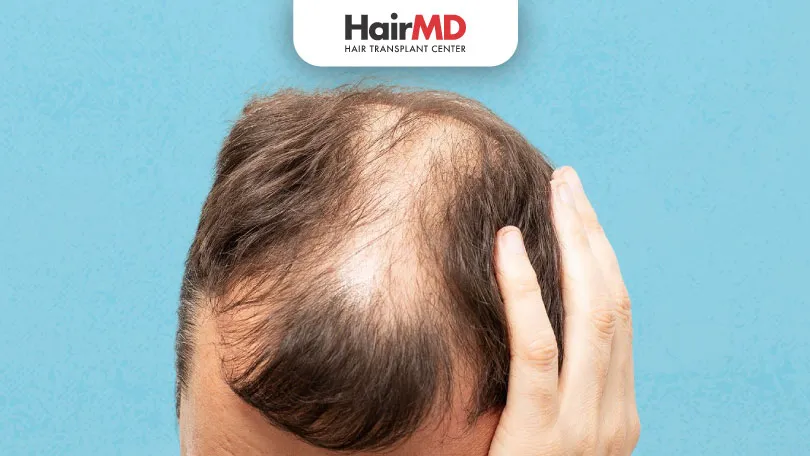21st August, 2021

Alopecia Areata is not a curse – just that science has a different relationship with you
Losing a chunk of hair consistently and don’t know the reason behind it? People around you either look at you with the purpose of laughing or provided unneeded sympathy?
Are you tired of not having a normal, healthy scalp like most people of your age? Then, there is a great chance that you are affected by Alopecia Areata. But, it is not the end of life at least for your hair. Here is an overview for you to understand this condition a little further.
What’s covered in the article?
- What is Alopecia Areata?
- What are the causes of Alopecia Areata?
- How is Alopecia Areata an autoimmune disorder?
- How do you go about the Diagnosis for Alopecia Areata?
- What are the Symptoms of Alopecia Areata?
- What are the treatments available for Alopecia Areata?
- Conclusion
What is Alopecia Areata?
Alopecia Areata is basically a form of hair loss that occurs when your body starts to attack the hair follicles which are responsible for hair growth. Even though it is common for both men and women, it is generally found in children under the age of 20, but people of any age can get affected with this disorder.
What are the causes of Alopecia Areata?
Alopecia Areata does not match other genetic disorders. It is not like you have a 50-50 chance to get it. It is highly unlikely for a child to get it from their parents. There are no fixed causes known for Alopecia Areata like it is for other autoimmune disorders. You can get a complete answer with HairMD to understand what triggered Alopecia Areata in you too.
How is Alopecia Areata an Autoimmune Disorder?
An autoimmune disorder is an issue caused when the body starts to act against its normal course. In this disorder, the white cells start to believe that these hair follicles are infected and they have to damage them to curb this disorder. For Alopecia Areata patients, the body starts to attack the hair follicles responsible for hair loss. This results into the uprooting of these hair follicles, causing the falling of chunks of hair.
How do you go about the Diagnosis
for Alopecia Areata?
At Hair MD, we pay special attention to the patient’s medical history and then undertake a physical examination to make a diagnosis. We ask the patient questions about hair loss, the pattern that it occurs in, and then analyze the hair scalp.
Most doctors follow the same procedure but if they fail to diagnose the right cause, then they will ask you to do the following tests to be sure:
-
- A Hair Analysis might be undertaken by taking a sample, which will be examined under a microscope.
- Some blood tests to eliminate the possibility of other causes such as thyroid, etc.
What are the symptoms of Alopecia Areata?
The most obvious symptom of Alopecia Areata is Hair Loss. It is basically a condition when hair starts to shed out in round patches. These patches usually do not have a high area in terms of centimeters. The other symptom is when hair loss starts to occur in other body parts too.
You will start noticing hair in the shower and on your pillow. But, hair loss is caused by a plethora of other diseases, so it is not the only symptom for Alopecia Areata. If you see a lot more extensive hair loss, then you may suffer from other types of Alopecia areata as well.
The other types are:
-
- Alopecia Totalis – In this case, the hair occurs throughout the scalp and you end up losing hair all across the scalp.
- Alopecia Universalis – In Alopecia Universalis, the patient suffers from hair loss all over the body.
Even though it is not a part of Alopecia Areata, you may suffer from Tinea Capitis too. It is a ringworm of the scalp which is caused by a fungal infection.
What are the Treatments available for Alopecia Areata?
As per the National Alopecia Areata Foundation, there are a plethora of treatments available for Alopecia Areata. Most hair grows back in a year, so most patients do not undergo serious treatment. Not all patients benefit from the same treatment- it depends on their age, the type of Alopecia and many other factors. Some treatments available with HairMD are:
-
- Intralesional Corticosteroid Injections
- Topical Minoxidil
- Anthralin Cream or Ointment
- Topical corticosteroids
- Hair plugs
We understand that suffering from Alopecia can be an emotionally taxing time for the patients. But, do not be disheartened and go for counseling. With the right treatment, you can easily fight your battle against Alopecia Areata.
Do You Know?
Nearly 250 Patients Visit HairMD
Everyday For Various Hair Concerns?
(Your journey to healthier and fuller hair starts here!)
Meet Our Dermatologists
Conclusion
In conclusion, while alopecia areata can feel like a life-altering condition, it’s important to remember that it is not a curse. With advancements in medical science, treatments are available to help manage symptoms and promote hair regrowth. Understanding that the body’s immune system mistakenly targets hair follicles offers hope and guidance on how to approach treatment. Support from specialists and emotional care is key to managing this journey.
Further Reading
How to Treat Alopecia Areata at Home: Natural Solutions for Hair Growth
Explore home remedies for alopecia areata to promote hair regrowth and boost confidence from home.
What Is The Best Treatment For Alopecia Universalis?
Learn about the best treatments for alopecia universalis, a condition causing total hair loss. Explore expert-recommended therapies and options for hair regrowth at HairMD.
Alopecia Care: Advanced Treatment Options for Men and Women
Explore alopecia treatments for men and women: minoxidil, laser therapy, and expert consultations in Pune. Find effective solutions!
When Does Alopecia Areata Typically Begin? Key Age Insights
Alopecia areata can start at any age, but often begins in teens, twenties, or thirties. Learn more about its onset and impact
Have thoughts? Please let us know
We are committed not only to treating you, but also educating you.










